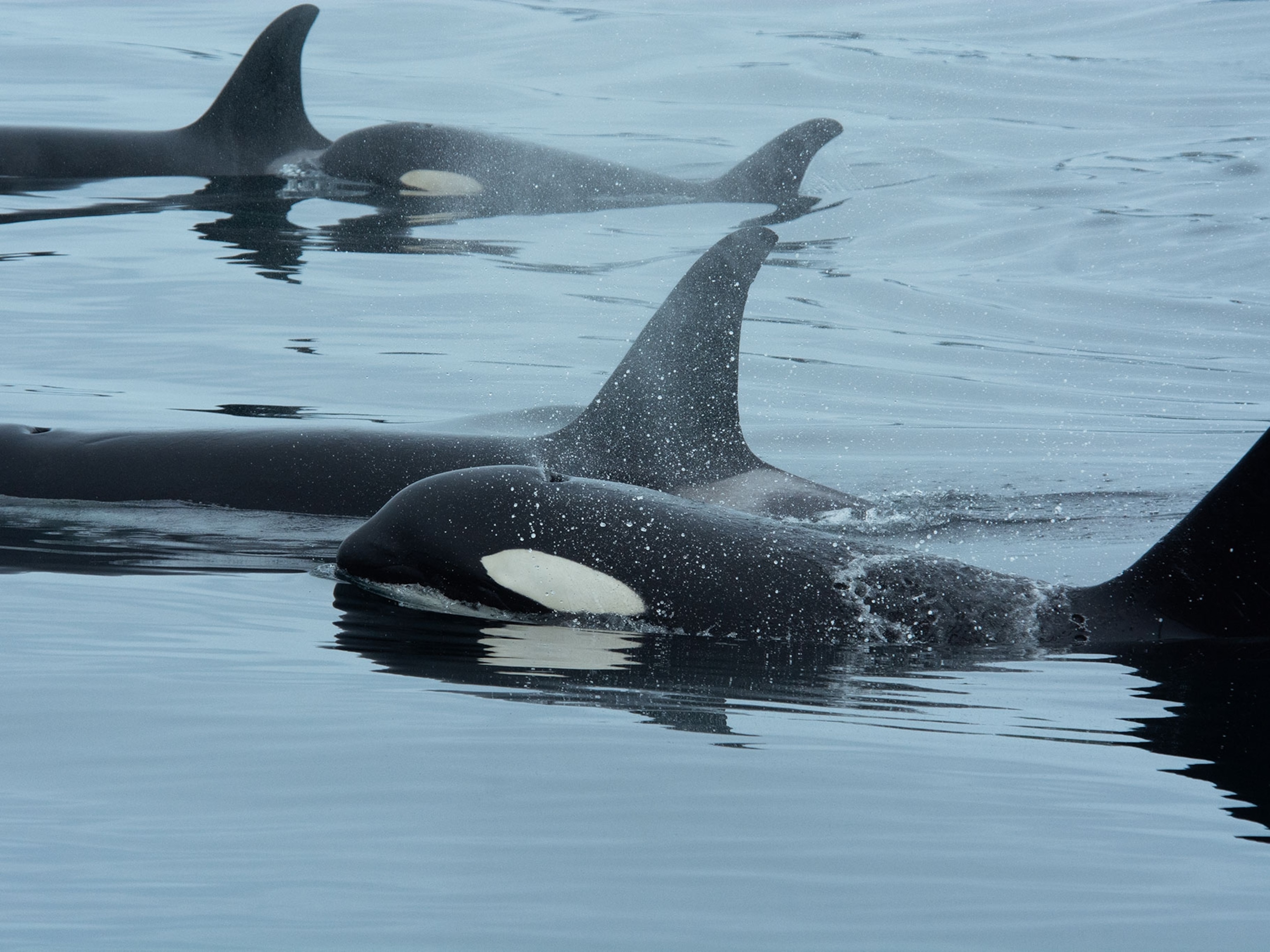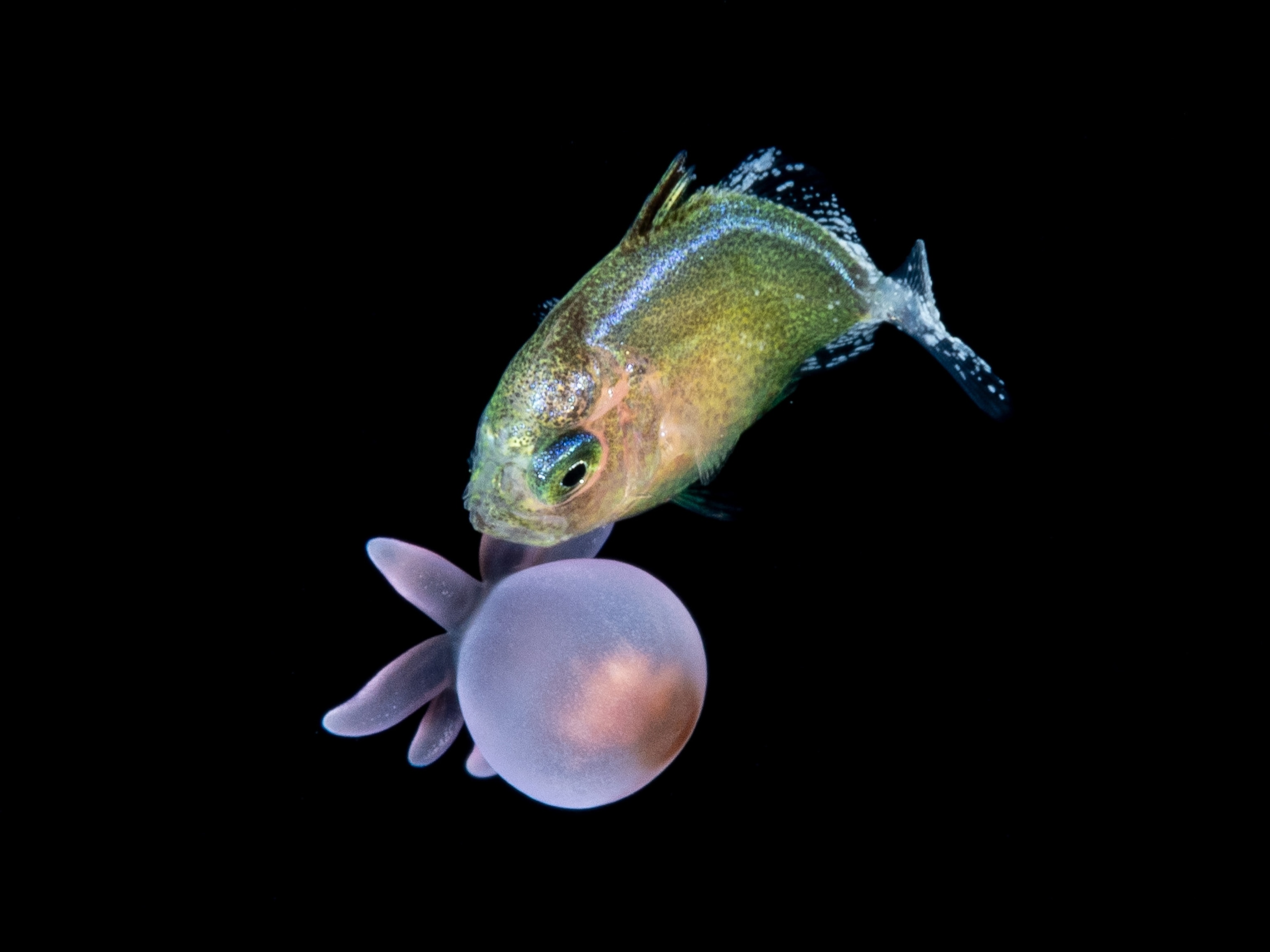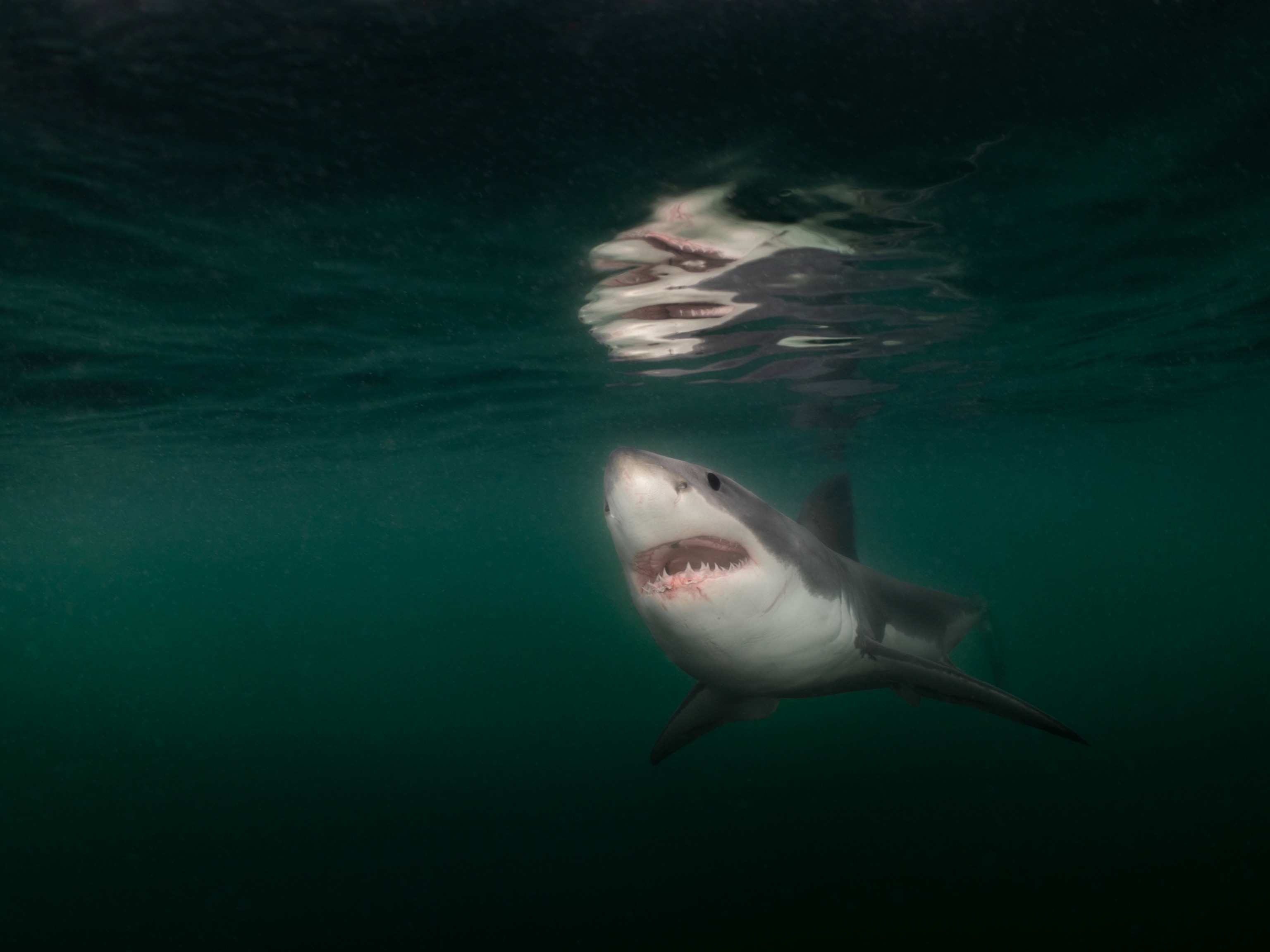Searching for great white sharks with underwater robots
New remote-operated drones give scientists the chance to explore places too dangerous for diving.
A large slick of blood bloomed on the ocean’s surface, just off the southern coast of California’s Farallon Islands. Marine biologist David McGuire pointed to little yellow beads of fat amid the swirling crimson, “It’s a seal.” The likely killer was one of several dozen great white sharks known to frequently hunt the island’s waters—perhaps one of the Sisters, a trio of massive, 17-foot females that continue to return to the islands, or Tom Johnson, the oldest-known great white shark, first spotted in the Farallones in 1987.
Baiting, or chumming, is forbidden here, so observing a great white’s natural behavior on a kill at the surface requires quite a bit of luck—and diving to get closer to the ravenous sharks carries serious risks.
But on this day, McGuire and entrepreneur David Lang, both National Geographic Explorers, were optimistic they would get a close-up view of the elusive apex predators from the safety of the boat. As the captain idled the engines, Lang leaned over the side and placed a sleek, white remotely operated vehicle, or ROV, not much larger than a laptop right into the midst of the bloody water. He fed out a section of its 328-foot cable, which connected it to its pilot and a video screen. The little robot’s propellers buzzed and burbled, and the device disappeared into the gory murk.
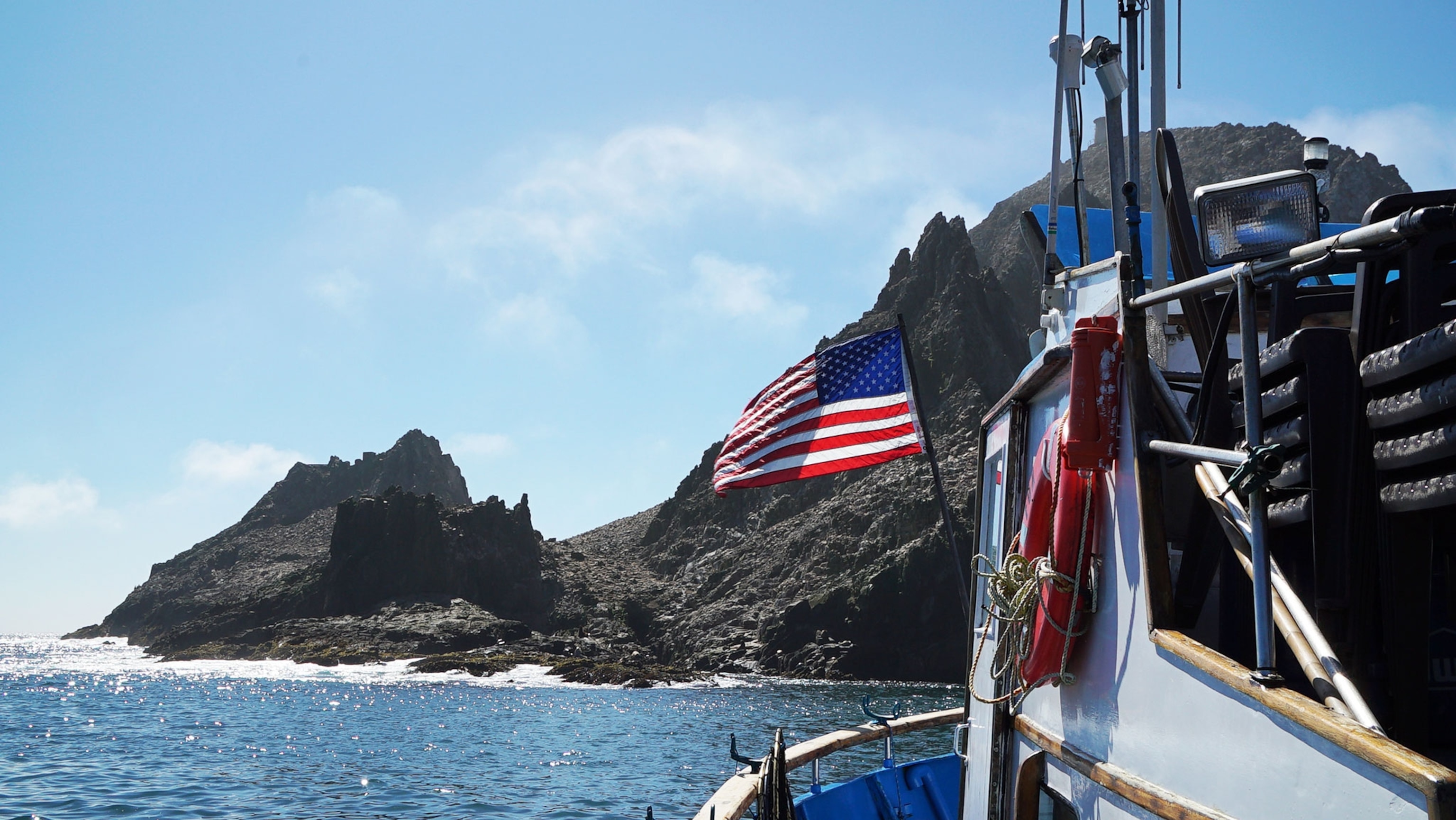
The Farallones, a rugged cluster of rocky islands about 27 miles off the coast of San Francisco, offered an ideal proving ground for Lang’s robots. Once a camp for Russian seal hunters and the site of numerous shipwrecks, the islands are now part of a marine protected zone that is off-limits to the public. A dozen species of seabirds and five species of seals populate their outcroppings, but McGuire is excited by the ecosystem below the water’s surface—a world dominated by great white sharks.
It’s also extremely difficult to explore. McGuire has been diving around the islands for 20 years and ticks off multiple challenges in addition to the hungry sharks—rough swells, boat-sinking crags, frigid temperatures that limit diving times. Even routine conservation exercises, such as abalone and urchin surveys, have to be carried out in cumbersome shark cages. As a result, the number of scientists who’ve studied the undersea life around the Farallones is small. “I can probably name every person who’s dived out here more than once,” he said, noting once is a lifetime’s worth for most. “Even with modern equipment, it’s pretty treacherous.”
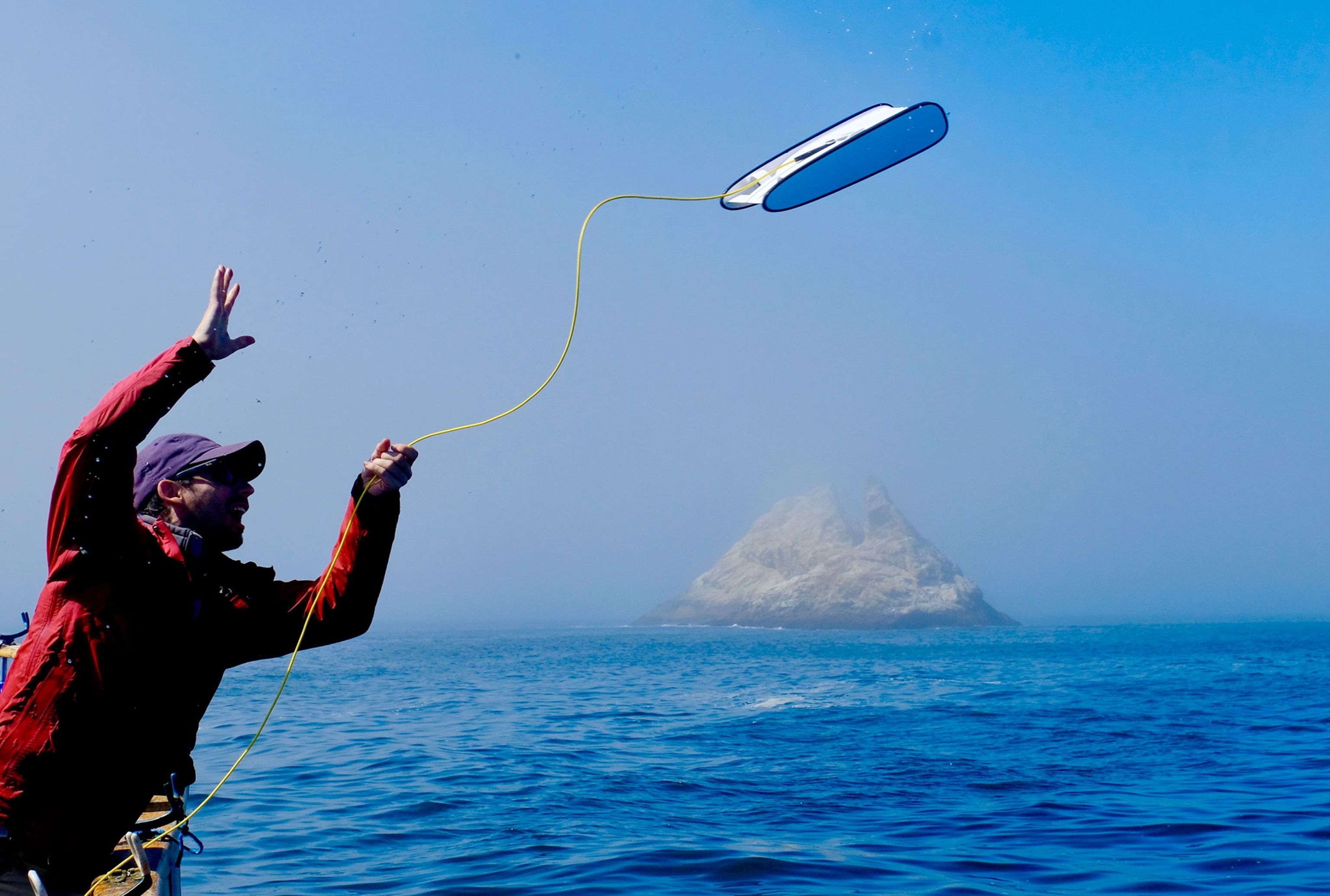
The bloody water is whole other concern. No one sane would attempt to dive into it, lest a shark mistake you for part of its meal. Still, observing the behavior of great whites, one of the ocean’s keystone species, is important to solving many mysteries about the animals and their migration patterns. Such studies, McGuire says, “have revealed behavior we never expected.” For example, scientists have only recently learned that great whites dive far deeper than previously thought—as far down as 3,000 feet—and that they migrate thousands of miles.
Without long-term observation, it would be impossible to make informed conservation decisions to protect their numbers, which have declined since the 1970s when the film Jaws vilified them worldwide. The International Union for Conservation of Nature (IUCN) classifies great whites as threatened but says the species’ population data needs to be updated to get a clearer picture.
- National Geographic Expeditions
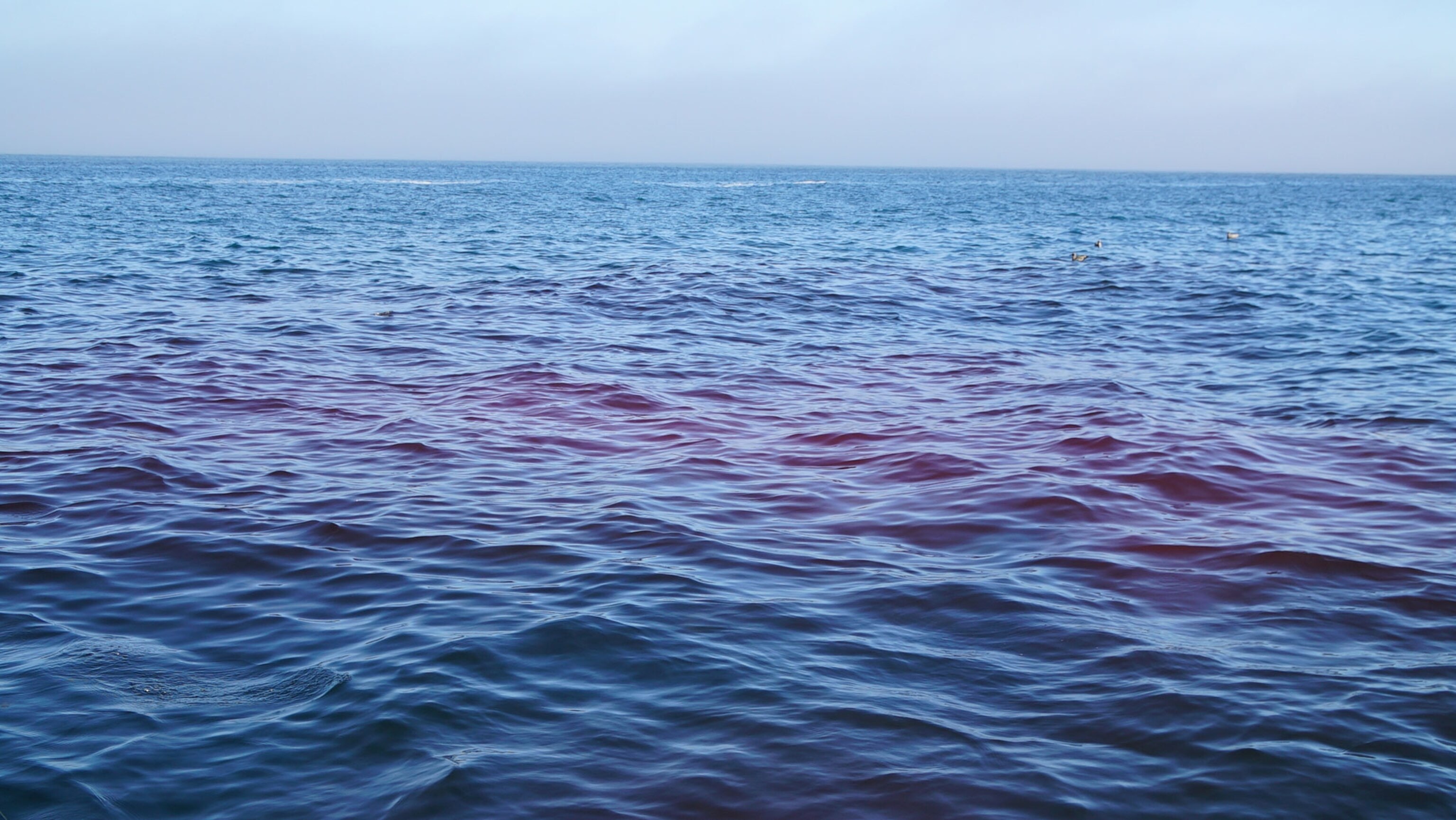
Building underwater eyes
To solve the mysteries of the great white shark, McGuire needed a new way to see them.
David Lang and his friend Eric Stackpole were not considering sharks five years ago when they were tinkering with a submersible robot in Stackpole’s garage. They were thinking about gold. A Gold Rush–era legend has it that the Hall City Cave north of San Francisco holds a sunken treasure at the bottom of a deep water-filled shaft. Lang, a self-taught sailor, and Stackpole, an engineer, wanted to build an affordable ROV that could go where humans couldn’t. “ROVs have been around for decades, but up until now they've been the domain of heavy industry and the military,” said Lang. “Big, expensive, and requiring specific training to operate.”
The two never found the treasure, but in the process of building a robot durable and maneuverable enough to overcome the challenges of cave diving, they created a new tool for underwater research.
Now based out of a warehouse in Berkeley, their experiment has become a company, OpenROV, which manufactures the latest version of their remote-operated robot, the Trident. It’s small enough to carry in a backpack and capable of diving down to 300 feet while streaming live, high-definition video to the surface. Starting at $1,500, it costs a fraction of the price of a large commercial ROV. Unlike human divers, the Trident can stay at depth for hours and not worry about low oxygen or the potentially deadly physiological effects caused by surfacing too fast. Also, it’s not afraid of sharks.
Similar to the way cheap, easy-to-operate drones are changing the way humans explore terrestrial landscapes, Lang and Stackpole believe a new class of ROVs can help transform ocean exploration. SCUBA diving, a technology Jacques Cousteau improved in the 1940s and 50s, changed the way we saw the oceans, but it remains an expensive and resource-intensive way to explore underwater. It carries many risks and provides easy access to only the first 100 feet below the surface. As a result, many coastal communities know almost nothing about the wilderness that lies below that depth, which has stymied resource management, conservation, and baseline data collection for years.
This is an invitation to be part of a new generation of explorers.David Lang, National Geographic Explorer
As Lang and Stackpole’s technology has improved, dozens of marine protected areas along the California coast have begun using their robots to monitor a range of projects, from eelgrass growth in Orange County to giant sea bass recovery in Catalina. A scientist at Boston University working in the Phoenix Islands Protected Area in the South Pacific, one of the planet’s most pristine underwater wildernesses, is using Tridents to monitor reef health. Chicago’s Adler Planetarium has a program that allows students to use Tridents to search for meteorites in Lake Michigan, and in a lake in the Yukon, a team of amateur explorers used one to locate a plane lost half a century ago.
Such projects are about to reach a new scale. On October 15, National Geographic announced it was teaming up with OpenROV to donate 1,000 Tridents to scientists, researchers, and students around the world to further similar projects. “We have an opportunity to get this tool to the frontlines of conservation and empower the people who need it the most,” Lang said. “This is an invitation to be part of a new generation of explorers.”

Searching the kill site
Back in the South Farallon Islands, the blood was dispersing. A pilot guided the ROV in a methodical search around the area of the kill but wasn’t able to locate a seal carcass or any sharks. It appeared to be a dine and dash.
The robot continued to send back real-time images as the team explored the region, including the Hurst Shoal, an area too dangerous for humans to dive because it was too far from shore to escape sharks. McGuire told me that, despite his two decades of exploring the Farallones, he had never seen this part of the islands’ waters. “I don’t know anyone who’s dove this far out. You’re totally exposed,” he said.
As the afternoon wore on, this previously unseen world flashed onto the video screen, and McGuire was delighted to observe the healthy ecosystem for the first time. Here, bright red anemones, green and garnet sea stars, and purple urchins littered the rocky ocean floor, and fish of all shapes and sizes darted among large boulders and dark crevices. Before long, the team spotted a wolf eel’s pale, wizened head poking from its den, waiting for its next meal. It cautiously peered at the ROV.
Throughout the afternoon, McGuire spotted multiple species that weren’t previously known to be present so far offshore, including a ling cod, a China rock fish, and a greenling of exceptional size—but he never stopped looking for signs of the great whites. The Sisters and Tom Johnson were out there somewhere, and equipped with Lang’s new pair of undersea eyes, he wasn’t going to stop looking for them.



